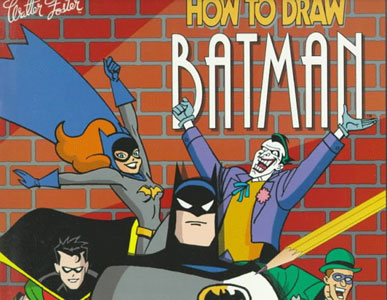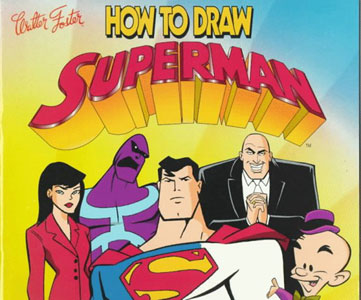|
|
|
|
|
|
| The
DC Comics Guide |

|
to
Writing Comics |
| by Dennis O'Neil |
Paperback: 128 pages
Watson-Guptill Publications
ISBN: 0823010279 |
$19.95

|
| There must be
dozens of books on how to draw comics, but even the best artists need to
tell a good story. Who can teach them? Dennis O'Neil. A comics writer and
editor for more than 20 years, O'Neil oversees DC Comics' Batman titles--one
of the most successful comics franchises ever. In addition, he's a bestselling
novelist, a screenwriter, and a writing teacher. So when it comes to storytelling,
O'Neil knows his stuff. In this guide he delivers his knowledge in a succinct,
no-nonsense style. |
O'Neil explains three-act
story structure and examines subplots, characterization, and methods for
developing drama and suspense. He then applies these concepts to comics'
specific forms: graphic novels, miniseries, maxiseries, and the rare megaseries
(such as Batman: No Man's Land, a year-long über-narrative played
out across five comics titles). As in good comics, words and images work
together in this book. Every idea is illustrated by panels or pages from
great moments in DC Comics lore. Especially illuminating are the script
excerpts that come paired with the comic book pages they describe.
Strangely, the book ignores
the visual side of comics writing. Modern comics scripts specify shots,
angles, and blocking in movie-director fashion, but that craft is never
addressed. (DC has a good opportunity here for a second volume.) However,
what this book sets out to teach--storytelling--it does quite well. Aspiring
comics writers won't just learn theory, they'll be empowered, because O'Neil
provides a framework for crafting new tales.
--J.B. Peck
.
From Booklist
O'Neil has been scripting
comics professionally for nearly two generations, and he offers much good
sense and valuable information about his craft. Although an ex-Marvelite
endorsed in a foreword by Stan Lee himself, O'Neil's principal experience
has been with DC, for whom he started with Batman and Superman and proceeded
to most of the other titles in the company's catalog. He provides everything
from a basic glossary, complete with visual examples, of scripting concepts
to advice on characterization--something vulgarly and erroneously supposed
not to exist in comics--to guidance on work habits and concludes by discussing
the various kinds of comic books, broadly conceived. He exemplifies from
DC's stable, which may make the book enticing to even the fan who isn't
particularly interested in becoming a scripter. But above all, O'Neil addresses
the universals of writing in a way that makes the book useful to all aspiring
scripters, regardless of their knowledge of comics.
--Roland
Green
Copyright © American
Library Association. All rights reserved.
|
|
|
|
|
|
| HOW
TO DRAW BATMAN |

|
by Ty Templeton |
Paperback: 40 pages
Walter Foster Publications
ISBN:1560103264 |
$8.95

|
|
|
|
|
| HOW
TO DRAW SUPERMAN |

|
by Ty Templeton, John Delaney, & Ron Boyd |
Paperback: 40 pages
Walter Foster Publications
ISBN: 1560103272 |
$8.95

|
|
|
| This book, as
well as the how to draw the animated Batman book are incredible. Not too
complex, colorful examples on an oversized book make it easy to learn the
style of the animated Batman series, and it's similar style counterpart
Superman. It has good tips on perspective, so beginners will be able to
learn the basics, and more advanced fans of this kind of style will be
able to work on the examples to hone their skill. Plus the writing is upbeat
and fun, the characters often tell you how to do different parts of the
book. 5 Stars for Fun and Style! |
|
|
|
|
|
|
HOW
TO DRAW WONDER WOMAN |
| by John Delaney & Ron Boyd |
Paperback: 40 pages
Walter Foster Publications
ISBN: 1560103280 |
$8.95

|
|
|
|
|
|



